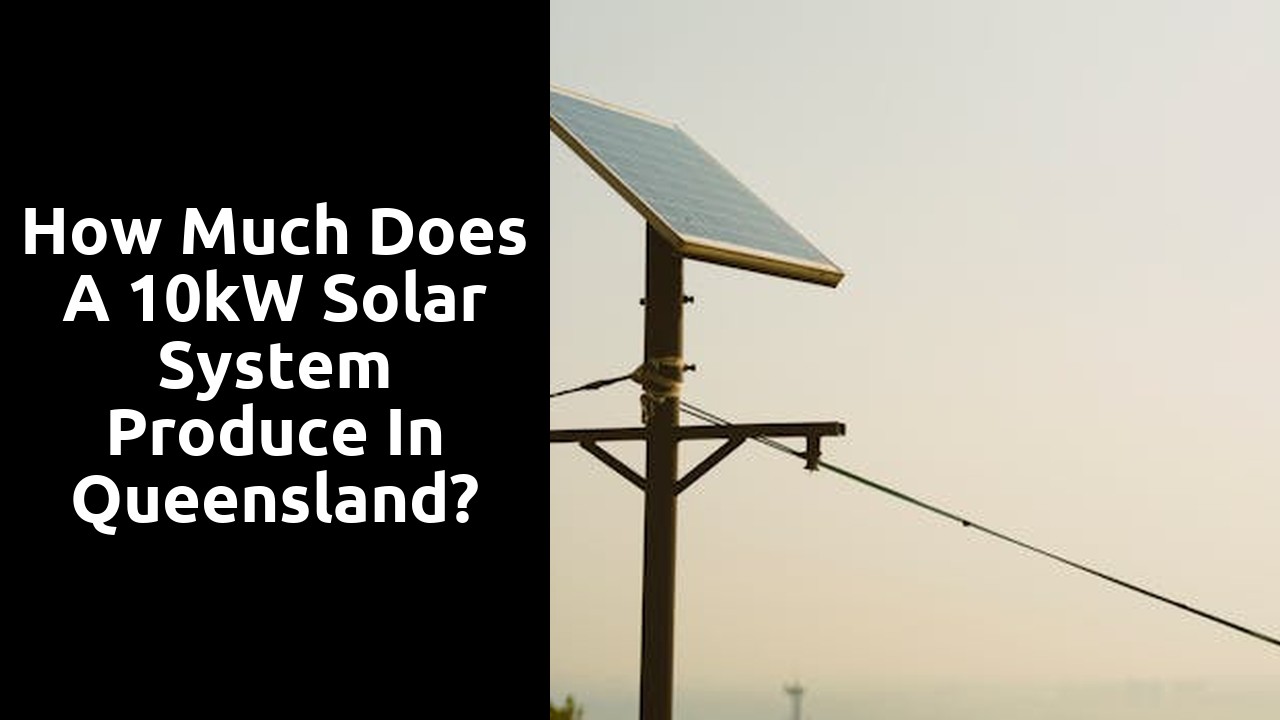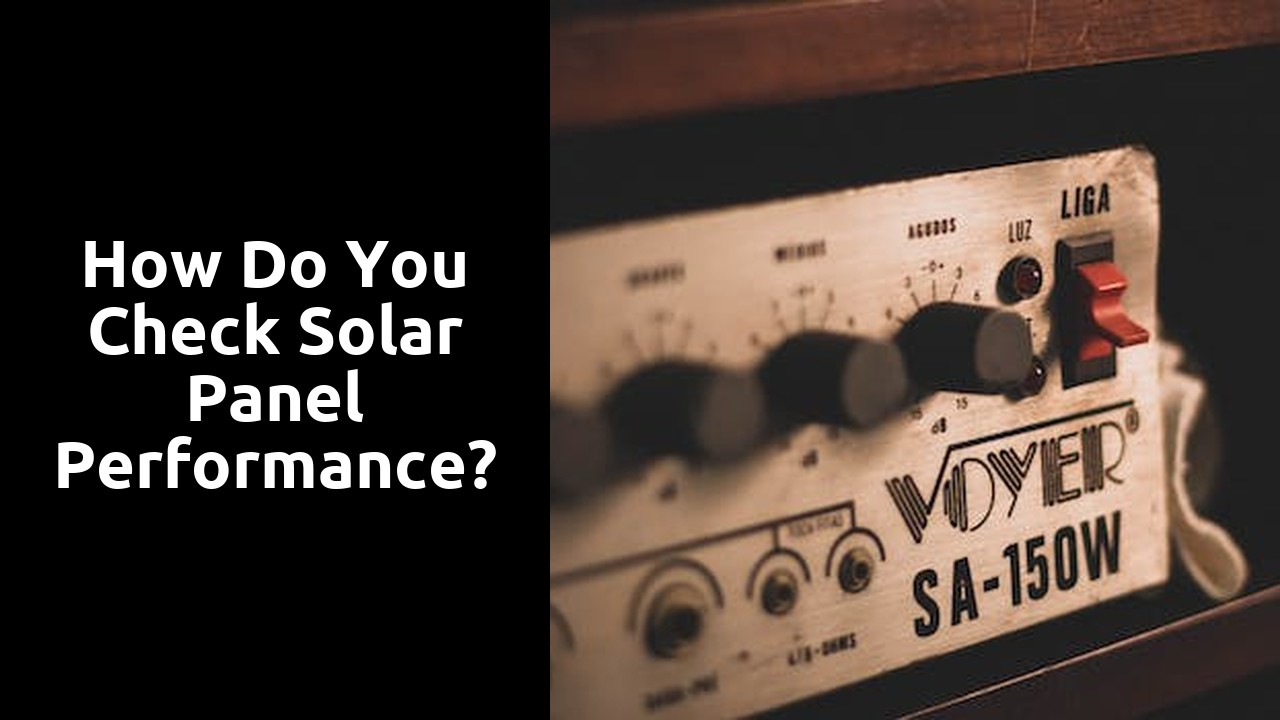
Monitoring and Tracking Energy Output of Your Solar System in Queensland
Monitoring and tracking the energy output of your solar system in Queensland is crucial for maximizing its efficiency and ensuring optimal performance over time. By conducting regular checks and using various tools and technologies, you can stay informed about how much energy your 10kW solar panel system is producing. Solar panel system performance analysis plays a key role in identifying any issues or potential improvements that can be made to enhance the overall output of your system.
In Queensland, utilizing tools such as real-time monitoring systems and energy meters can provide valuable insights into the generation of solar power. These tools allow you to track the energy production of your 10kW solar system and compare it to your energy consumption. By actively monitoring and analyzing the performance of your solar panels, you can make informed decisions to optimize their operation and increase your return on investment in the long run.
Tools and Technologies for Monitoring Solar Energy Generation
For individuals in Queensland looking to effectively monitor the energy output of their 10kW solar system, investing in tools and technologies designed for such purposes is essential. One of the most commonly utilized tools is a solar energy monitoring system, which allows homeowners to track the energy production levels of their solar panels in real-time. These systems provide detailed insights into how much energy is being generated, consumed, and stored, empowering users to make informed decisions to enhance the efficiency of their solar panel system.
Moreover, another valuable technology for monitoring solar energy generation is the use of performance analysis software. This software enables users to assess the performance of their solar panels over time, identifying any potential issues or inefficiencies that may be hindering the system's overall output. By conducting regular Solar Panel System Performance Analysis, homeowners can proactively address any concerns and optimize the performance of their solar energy system to maximize energy generation and cost savings.
Estimating Return on Investment for a 10kW Solar System in Queensland
When considering the return on investment for a 10kW solar system in Queensland, it is essential to delve into the dynamics of Solar Panel System Performance Analysis. This analysis entails evaluating the capabilities of your solar panels to generate electricity based on factors like sun exposure, weather patterns, and system efficiency. Understanding how much energy your system can produce under prevailing conditions is crucial for estimating the financial returns.
Moreover, calculating the payback period and savings resulting from your 10kW solar system in Queensland hinges on diligent Solar Panel System Performance Analysis. By determining the amount of electricity your system can generate and how much of your energy needs it can meet, you can assess the savings achieved on reduced energy bills. This scrutiny is instrumental for making informed decisions about the viability of investing in solar energy and reaping its long-term benefits.
Calculating Payback Period and Savings
Calculating the payback period and potential savings from a 10kW solar panel system in Queensland involves a comprehensive analysis of factors like initial installation costs, electricity generation, and potential savings over time. To estimate the payback period, one must consider the total cost of purchasing and installing the system, including any rebates or incentives received. By comparing this initial investment to the projected savings on electricity bills, one can determine the approximate time it will take to recoup the upfront costs. This calculation provides a clear insight into the financial benefits of investing in solar energy and helps individuals make an informed decision on whether to proceed with installation.
Solar panel system performance analysis plays a crucial role in assessing the long-term savings generated by a 10kW system in Queensland. By tracking the energy output and efficiency of the solar panels, homeowners can monitor their electricity generation and usage patterns, allowing them to leverage their solar investment for maximum savings. Additionally, understanding the specific tools and technologies available for monitoring solar energy production can further enhance the overall performance and efficiency of the system. This data-driven approach not only enables individuals to make informed decisions but also empowers them to maximise the benefits of harnessing solar energy in Queensland.
Government Incentives and Rebates for Installing Solar Panels in Queensland
The Australian government offers various incentives and rebates to encourage the installation of solar panels in Queensland. By investing in a solar panel system for your property, you may be eligible for financial assistance that can significantly reduce the upfront costs. These incentives are designed to support homeowners and businesses in transitioning to renewable energy sources, ultimately contributing to a more sustainable environment. Additionally, by taking advantage of these government rebates, you can not only save money on your initial investment but also benefit from long-term energy savings through reduced electricity bills.
To make the most of the incentives and rebates available for installing a solar panel system in Queensland, it is essential to conduct a thorough Solar Panel System Performance Analysis. This analysis involves assessing the energy generation capacity of the solar system based on factors such as location, sunlight exposure, and system size. By understanding the potential performance of your solar panel system, you can accurately estimate the financial returns and benefits it will provide over its lifespan. Furthermore, monitoring the performance of your solar panel system regularly will help ensure optimal efficiency and maximize the incentives and rebates you can receive.
Financial Benefits of Utilizing Solar Energy Programs
When considering the financial benefits of utilizing solar energy programs in Queensland, it is essential to delve into the realm of Solar Panel System Performance Analysis. This analysis allows individuals to gauge the efficiency and output of their solar systems, providing insights into energy generation and potential savings. By closely monitoring and tracking the performance of a solar system, homeowners can make informed decisions to optimize their energy usage and ultimately reduce their electricity bills.
Moreover, through the implementation of various tools and technologies for monitoring solar energy generation, Queensland residents can take full advantage of the financial benefits offered by solar energy programs. By harnessing data on energy production, consumption patterns, and potential savings, individuals can accurately estimate their return on investment. This data-driven approach empowers homeowners to calculate their payback period, maximize energy savings, and capitalize on the incentives and rebates provided by the government for installing solar panels.
FAQS
How much electricity can a 10kW solar system produce in Queensland?
On average, a 10kW solar system in Queensland can generate around 38-46 kWh per day, depending on factors like weather conditions, panel orientation, and shading.
Is it necessary to monitor the energy output of a 10kW solar system in Queensland?
Yes, monitoring the energy output is essential to ensure the system is functioning optimally and to track energy generation for a better understanding of its performance.
What tools and technologies can be used to monitor solar energy generation in Queensland?
Various tools such as energy monitoring systems, smart meters, and online monitoring platforms can be used to track and analyze the energy production of a solar system in Queensland.
How can I estimate the return on investment for a 10kW solar system in Queensland?
To estimate the return on investment, consider factors like the cost of the system, energy savings, feed-in tariffs, and government incentives to calculate the payback period and overall savings.
What is the payback period for a 10kW solar system in Queensland?
The payback period for a 10kW solar system in Queensland typically ranges from 3 to 6 years, depending on various factors such as energy consumption, system efficiency, and government incentives.
Are there any government incentives and rebates available for installing solar panels in Queensland?
Yes, Queensland offers various government incentives and rebates, such as the Solar Bonus Scheme and Small-scale Technology Certificates (STCs), to encourage the adoption of solar energy systems.
What are the financial benefits of utilizing solar energy programs in Queensland?
By leveraging solar energy programs in Queensland, homeowners can benefit from reduced electricity bills, potential income from excess energy generation fed back to the grid, and environmental sustainability through clean energy production.
